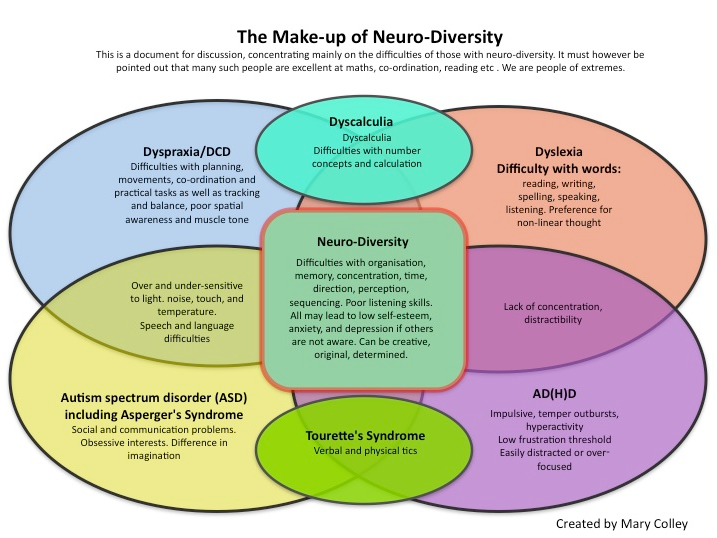Neurodevelopmental Conditions
ADHD is a neurodevelopmental condition; that is to say, its symptoms, and associated behaviours and traits are the result of a person’s brain developing differently during the key stages of development before they were born or as a very young child. This differs from mental illness, which refers to patterns of behaviour where a person experiences a ‘state of mind’ that is different from their ‘normal self’.
With neurodevelopmental conditions, there is no bona fide 'normal' state of mind to compare to, making treatment more difficult as it is hard to determine when someone is treated. The goal of ADHD treatment is to ensure that people with ADHD can reach their full potential.
Causes of neurodevelopmental conditions include:
- Genetics
- Trauma at birth
- Infectious disease
- Immune disorders
- Nutritional factors
- Physical trauma
It is becoming increasingly recognised that, along with ADHD, a person may experience symptoms of other neurodevelopmental conditions such as autism, Asperger’s, Tourette’s syndrome, Obsessive Compulsive Disorder (OCD), dyslexia, and dyspraxia.
- Approximately 1 in 2 people with ADHD have dyslexia
- Approximately 1 in 2 people with ADHD have dyspraxia
- 9 in 10 people with Tourette's have ADHD
- 2 in 3 people with ADHD have autistic spectrum traits, and people with ADHD are 8-fold more likely to meet full criteria for an autistic spectrum diagnosis
While it is common for neurodevelopmental conditions to occur with co-occurring mental health conditions, (eg. ADHD + bipolar), due to poor awareness it is also common for neurodevelopmental conditions to be misdiagnosed as mental illness. ADHD may also co-occur with physical health conditions, such as Ehlers-Danlos Syndrome (EDS, also sometimes referred to under the umbrella of "hypermobility" although not all EDS patients are hypermobile), Mast Cell Activation Syndrome, and coeliac disease.
What is neurodiversity?
Neurodiversity is a term that refers to the natural differences between people and was coined in the late 1990’s by Australian sociologist Judy Singer. It can be compared to terms such as race, culture, class and gender and is useful to describe people with varying characteristics and behaviours of neurodevelopmental conditions alongside the “neurotypical” majority in a non-prejudiced way.
Learning about neurodiversity can help you move the focus from impairments towards everyone's different abilities.
It is thought that up to 15% of the population are thought to be neurodiverse. The remaining majority are neurotypical.

NeuroKnowHow.com
- ~8% of people in the UK are thought to have ADHD.
- ~10% of people in the UK are thought to have dyslexia.
- ~8% of people in the UK are thought to have dyspraxia.
- ~6% of people in the UK are thought to have dyscalculia.
- ~1% of people in the UK are thought to have an autistic spectrum condition.
- ~1% of people in the UK are thought to have Tourette's syndrome.
- It is thought that as research develops, certain mental health conditions such as psychopathy, some personality disorders and schizophrenic conditions will come to be re-interpreted as having been diagnosed both in people who experience symptoms due to poor mental health and people who are experiencing neurodiversity and require different approaches to care.
- An additional ~3% of the population are known to have generalised intellectual disability.
- Some people believe that being generally intellectually gifted might be a form of neurodiversity, citing rare conditions like savant syndrome and hyperthymesia (highly superior autobiographical memory) as extreme examples of neurodiverse giftedness.
Many aspects of society are based on the assumption that there is one form of 'the human mind' and accordingly, many systems (education, employment, health and social services, social relationships) have been built up premised on being neurotypical. Building a society that is accessible for neurodiverse people is not only beneficial for everyone, but fair.
ADHD Aware provides training services, for more information, see our page on workplace neurodiversity training.
